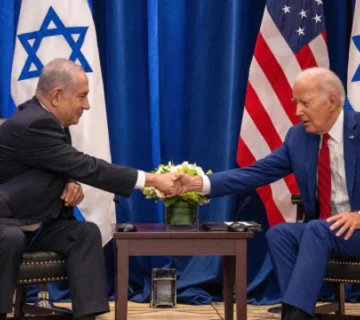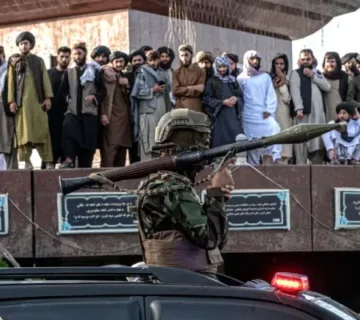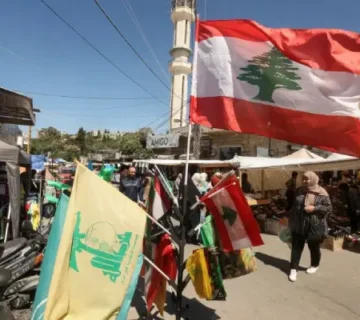In the turbulent region of the Middle East, Iran faces a longstanding threat: the Zionist regime. This regime, with an insatiable and expansionist nature rooted in Zionist ideology, has repeatedly shown that it will stop at nothing to invade others’ lands for territorial expansion. From the occupation of Palestine to repeated warmongering in the region, this threat is palpable for Iran and its neighbors.
In its latest military aggression, Israel launched an attack on Iran in June 2025, which was largely predictable. Regime officials claimed the attack was solely to prevent Iran from acquiring nuclear weapons; however, New Order research reveals otherwise and proves that this major tension was created by Israel in the Middle East with deeper reasons and backgrounds.
Ideological Roots of a Major Global Threat
Zionist ideology, which the Israeli regime fully aligns its policies and actions with, claims that the lands between the Nile River in Egypt and the Euphrates in Iraq are the promised homeland of the Jewish people and must come under the control of a Jewish state. This claim, from Theodor Herzl, the founder of Zionism, to figures like Rabbi Fishman and senior rabbis, and to leaders like Yitzhak Shamir and current figures such as Bezalel Smotrich and Avi Lipman and other Zionist leaders, has been repeated numerous times. This expansionist ambition, after the establishment of the Zionist regime in the occupied Palestinian territories, turned into practical strategies. The most important of these strategies is the fragmentation of regional countries into smaller states based on racial and religious lines; states that are embroiled in internal disputes and dependent on the Zionist regime for survival. Since the 1950s, this regime has been busy designing religious and racial conflicts in regional countries, including Iraq and Lebanon.

Map of Greater Israel, first proposed based on ambitious ideas by Theodor Herzl

Display of the Greater Israel map on the Zionist regime’s flag, installed on Smotrich’s speech podium
Victory Over Arabs and Formation of a Jewish State
After Israel’s victory over Arab countries in 1967 and normalization agreements with Arabs in the 1970s, and the consolidation of the Israeli state’s existence in occupied Palestine, Israeli strategists once again thought of expansionism beyond Palestine’s borders and devised plans for dominance over the Middle East. One of these designs belongs to Oded Yinon, advisor to Ariel Sharon, known as the Yinon Plan. According to this plan, Israel must intervene and create instability and racial-religious divisions in regional countries to pave the way for their fragmentation. The plan precisely details how many parts each country should be divided into.
The Yinon Plan was highly effective in Ariel Sharon’s doctrine, and during this period, Israel pursued the plan of fragmenting and redrawing the Middle East by invading Lebanon in 1982, arming Christians and Sunnis, inciting them against each other, creating Shiite-Sunni divisions, and supporting the creation of a Christian state, thus igniting a bloody civil war in that country.
Islamic Revolution in Iran, an Obstacle to Expansionism
At the same time, the Islamic Revolution in Iran succeeded and overthrew one of the key allies of America and Israel, namely the Pahlavi regime. The Pahlavis had two characteristics that made them ideal tools for Zionist goals: complete obedience to U.S. policies and disregard for Iran’s territorial integrity. For example, during Mohammad Reza Pahlavi’s era, Israel fueled civil war in Iraq through his aid to Iraqi Kurds. During Reza Shah’s time, regions of Iran were repeatedly separated from Iran voluntarily without war, and during Mohammad Reza Shah’s era, the strategic region of Bahrain was separated from Iran on Britain’s orders.
However, the Islamic Republic adopted a completely different approach. This system not only rejected U.S. dominance but also sought to turn Iran into a regional power with an emphasis on independence. Territorial integrity was a red line for the new government, and the unity of Iranian ethnic groups in the Iran-Iraq War and the suppression of separatist rebellions sent a message to Zionists that Iran is a serious obstacle to their separatist plans. Thus, this country became a serious target for Israel’s hostile policies. Simultaneously, the cutoff of U.S. interests in Iran after the revolution drove that country into open enmity with Tehran, and Washington’s full support for Iraq’s attack on Iran was evidence of this enmity.
New Middle East, a Map for Domination
After the collapse of the Soviet Union, the United States, without rivals, intensified its cooperation with Israel for dominance over the Middle East. The Yinon Plan was updated and, under titles like “Project for the New American Century” and “New Middle East,” extensive attacks against Middle Eastern countries were designed. One of these maps was published by Colonel Ralph Peters in the U.S. Armed Forces Journal. In this map, titled “Blood Borders,” Middle Eastern countries are fragmented along racial-religious lines, affecting various parts of Iran as well. According to this map, Iran’s Kurdistan should merge with Kurds in Iraq and Turkey, Arab Shiites in Khuzestan with Shiites in Iraq and Kuwait, Iran’s Turks with Turks in Turkey and Azerbaijan, and Iran’s Balochistan with Pakistan’s Balochistan, forming new small countries through wars against their central governments and separatism.


September 11 Incident and Deployment of U.S. Army to the Middle East
The September 11, 2001 incident, which many consider fabricated, became a pretext for starting these aggressions. General Wesley Clark revealed the behind-the-scenes plans of the U.S. for these wars, stating that America intended to attack seven regional countries, including Iran. The attacks on Afghanistan in 2001 and Iraq in 2003, with the deployment of hundreds of thousands of American troops around Iran, were part of this plan.
American and Israeli officials repeatedly spoke of an imminent attack on Iran after the Iraq invasion. For each of these aggressions, they presented excuses to the public that later proved untrue and merely false justifications. Cases like “Saddam’s weapons of mass destruction” (which, under sanction pressures and full access to UN inspectors, were shown not to exist) or “Iran’s nuclear bomb threat” (which IAEA inspectors have repeatedly stated that Iran’s nuclear activities are peaceful and pose no threat to anyone) were raised; claims that were later proven baseless.
Iran’s Strategic Depth and Creation of a Resistance Shield
However, two major obstacles stood in the way of this plan: Hezbollah in Lebanon and Bashar al-Assad’s government in Syria. Two forces that, with Iran’s cooperation and assistance, were strengthened during this time and created a new axis in the Middle East. Hezbollah was ready to target northern occupied Palestine in case of an attack on Iran, and Syria was a direct threat to Israel. For this reason, Zionists first attacked Lebanon. In 2006, Condoleezza Rice, then U.S. Secretary of State, standing next to Netanyahu, called the sound of bombings from this aggression the “birth pangs of a new Middle East.” But the entry of Iranian General Qasem Soleimani and the Quds Force of the IRGC as Iran’s external arm, along with Hezbollah’s resistance led by Sayyed Hassan Nasrallah, thwarted Israel’s attack in 33 days and ended it.
After this failure, the focus shifted to Syria. By supporting extremist groups like ISIS, which U.S. officials themselves admitted to creating and whose wounded were treated in Israeli hospitals, civil war in Syria was ignited. But General Soleimani and his soldiers entered again and neutralized this threat by defeating ISIS and stabilizing Syria’s central government. These victories kept the shadow of war away from Iran and strengthened Iran’s strategic depth. Interestingly, in these years, America spent 8 trillion dollars (50% of its military budget) on Middle East wars, while Iran’s military costs, even according to U.S. officials’ claims, were only 20 billion dollars; an amount that is one-four-hundredth of Washington’s costs, one-tenth of Iran’s defense budget, and one-hundredth of the country’s total budget!


IMEC and Economic Efforts for Domination
After military failures, Israel turned to an economic strategy. The IMEC corridor (India, Middle East, Europe) was intended to make Israel the gateway for trade between Asia and Europe and make normalization with this regime inevitable. But implementing this plan required eliminating the Palestinian issue. In fact, Israel intended to link trade between the two continents to recognition and normalization with itself. The prerequisite for this plan was a permanent resolution of the Palestinian issue, which the Zionist regime aimed to achieve by a massive attack on Gaza and forcibly displacing Palestinians to surrounding countries, annexing the West Bank and Gaza to Israel, and thus ending the Palestinian issue forever.
Netanyahu’s map, displayed in 2023 to introduce the IMEC project at the UN, had annexed Gaza and the West Bank to Israel. In this regard, Hamas, aware of Israel’s imminent attack on Gaza, launched Operation Al-Aqsa Flood on October 7, 2023. This preemptive attack, while transferring the initiative to Palestinian forces, was carried out with remarkable success and the capture of hundreds; it also shattered Israel’s hegemony and provoked the regime’s savage and nervous reaction in bombing defenseless people in Gaza.

Netanyahu’s Speech in 2023 at the UN and Display of the IMEC Map, in Which All Occupied Sections Are Part of Israel, and From the Zionists’ Perspective, Palestine Essentially No Longer Exists

Al-Aqsa Flood and Return to Square One
This operation returned Israel to 70 years ago; a time when its existence was in danger and it sought global legitimacy. After the Zionist regime’s nervous and passive reaction to Al-Aqsa Flood and the unprecedented genocide in the Gaza Strip, military tensions in the occupied territories peaked, creating unprecedented insecurity in territories under Israeli control. To the extent that Haifa Port, which was supposed to be the key gateway for IMEC’s connection to Europe, came under direct fire from Palestinian resistance forces.
On the other hand, international consensus in condemning the Zionist regime’s war crimes and genocides, especially consensus among regional nations, made the path to normalizing relations with Israel very difficult and even impossible for Arab governments in the Persian Gulf. Therefore, many experts worldwide see the continuation of the IMEC project shrouded in ambiguity, and some experts have explicitly stated that IMEC is dead before birth! The Wall Street Journal wrote in this regard: “The Hamas attack changed everything. For Israel, the issue of survival has returned.”


Clash with the Axis of Resistance and Assassination of Commanders
Of course, one cannot ignore the activities of Mossad’s assassination machine, as Israel’s strongest military arm. Because this arm was able to eliminate key commanders of Palestinian resistance forces like Ismail Haniyeh and Yahya Sinwar, as well as Hezbollah commanders including Sayyed Hassan Nasrallah, and thus somewhat weaken the Axis of Resistance in the region. Of course, these aberrant and illegal actions brought a lot of negative political baggage in international relations and public opinion in the Middle East and the world against the Israeli regime.
Now, the Zionist regime is fighting to preserve its existence and sees war as the only way to survive. Assassinating commanders through intelligence operations was the only recourse when Israel lacked the ability for direct confrontation. The Axis of Resistance has also suffered injuries but has not been destroyed and has somewhat succeeded in rebuilding itself. Hezbollah’s attacks on Israel after the martyrdom of its commanders, which led to Israel’s request for a ceasefire, demonstrate this.
Attack on Iran and This Country’s Devastating Response
After the fall of Bashar al-Assad’s government in Syria and the elimination of resistance group commanders in Palestine and Lebanon, as its last tactic, the Israeli regime decided to launch a military attack on Iran. Therefore, in June 2025, it implemented its plan; an action that initially, with the elimination of Iranian military commanders and nuclear scientists, was considered a great success for Israel, but soon faced a very severe response from this country and confronted Israel with numerous problems.
Now, this battle is like a boxing match; there are many exchanges between the two sides, but despite Iran’s and even Yemen’s continuous missile and drone attacks on Israel, and reports of very severe damages and casualties in Tel Aviv and Haifa, it seems that this regime is hanging on the ropes of the ring, taking its last breaths, and the referee is counting down to declare its defeat. Based on the statements of most military and political experts, the battle equation is completely in favor of Iran and the Axis of Resistance. Events such as severe media censorship, insistence on the open entry of the United States into the war, and scattered and weak attacks on non-strategic areas in Iran indicate a crisis in the Israeli regime. Add to this the successful performance of Iranian defense systems and the downing of super-advanced F-35 fighters for the first time, as well as the self-inflicted damage of Israeli air defense systems.
According to analysts, this war may have costs for Iran and last for weeks, but its end could usher in a new regional and even global order in which Iran is one of the main players.Nazmino whose political and economic opportunities for the progress of peace-loving countries worldwide will be incomparable to before this war.


US and Israeli strategies to destabilize Iran








no comment